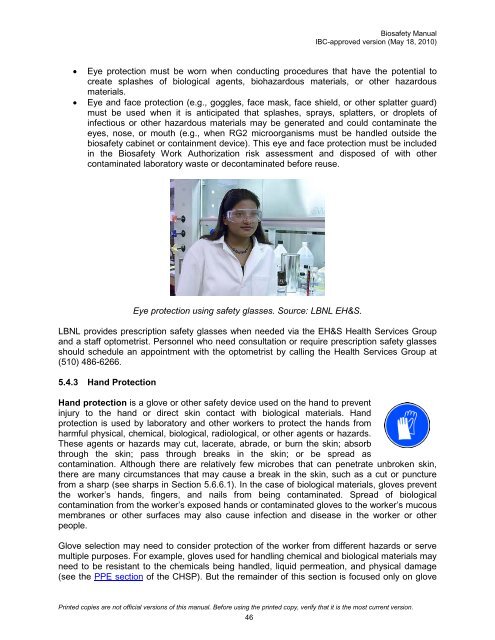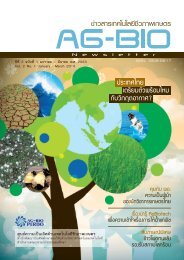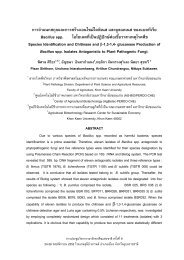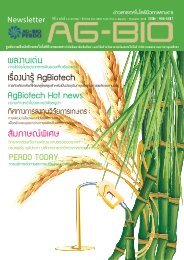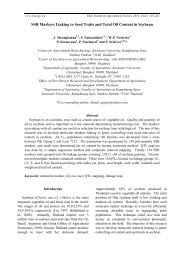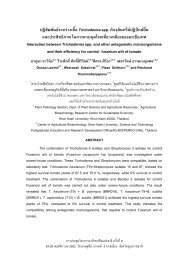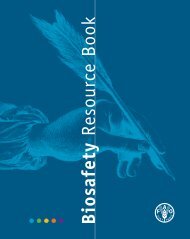Biosafety Manual PDF - Lawrence Berkeley National Laboratory
Biosafety Manual PDF - Lawrence Berkeley National Laboratory
Biosafety Manual PDF - Lawrence Berkeley National Laboratory
Create successful ePaper yourself
Turn your PDF publications into a flip-book with our unique Google optimized e-Paper software.
<strong>Biosafety</strong> <strong>Manual</strong><br />
IBC-approved version (May 18, 2010)<br />
• Eye protection must be worn when conducting procedures that have the potential to<br />
create splashes of biological agents, biohazardous materials, or other hazardous<br />
materials.<br />
• Eye and face protection (e.g., goggles, face mask, face shield, or other splatter guard)<br />
must be used when it is anticipated that splashes, sprays, splatters, or droplets of<br />
infectious or other hazardous materials may be generated and could contaminate the<br />
eyes, nose, or mouth (e.g., when RG2 microorganisms must be handled outside the<br />
biosafety cabinet or containment device). This eye and face protection must be included<br />
in the <strong>Biosafety</strong> Work Authorization risk assessment and disposed of with other<br />
contaminated laboratory waste or decontaminated before reuse.<br />
Eye protection using safety glasses. Source: LBNL EH&S.<br />
LBNL provides prescription safety glasses when needed via the EH&S Health Services Group<br />
and a staff optometrist. Personnel who need consultation or require prescription safety glasses<br />
should schedule an appointment with the optometrist by calling the Health Services Group at<br />
(510) 486-6266.<br />
5.4.3 Hand Protection<br />
Hand protection is a glove or other safety device used on the hand to prevent<br />
injury to the hand or direct skin contact with biological materials. Hand<br />
protection is used by laboratory and other workers to protect the hands from<br />
harmful physical, chemical, biological, radiological, or other agents or hazards.<br />
These agents or hazards may cut, lacerate, abrade, or burn the skin; absorb<br />
through the skin; pass through breaks in the skin; or be spread as<br />
contamination. Although there are relatively few microbes that can penetrate unbroken skin,<br />
there are many circumstances that may cause a break in the skin, such as a cut or puncture<br />
from a sharp (see sharps in Section 5.6.6.1). In the case of biological materials, gloves prevent<br />
the worker’s hands, fingers, and nails from being contaminated. Spread of biological<br />
contamination from the worker’s exposed hands or contaminated gloves to the worker’s mucous<br />
membranes or other surfaces may also cause infection and disease in the worker or other<br />
people.<br />
Glove selection may need to consider protection of the worker from different hazards or serve<br />
multiple purposes. For example, gloves used for handling chemical and biological materials may<br />
need to be resistant to the chemicals being handled, liquid permeation, and physical damage<br />
(see the PPE section of the CHSP). But the remainder of this section is focused only on glove<br />
Printed copies are not official versions of this manual. Before using the printed copy, verify that it is the most current version.<br />
46


